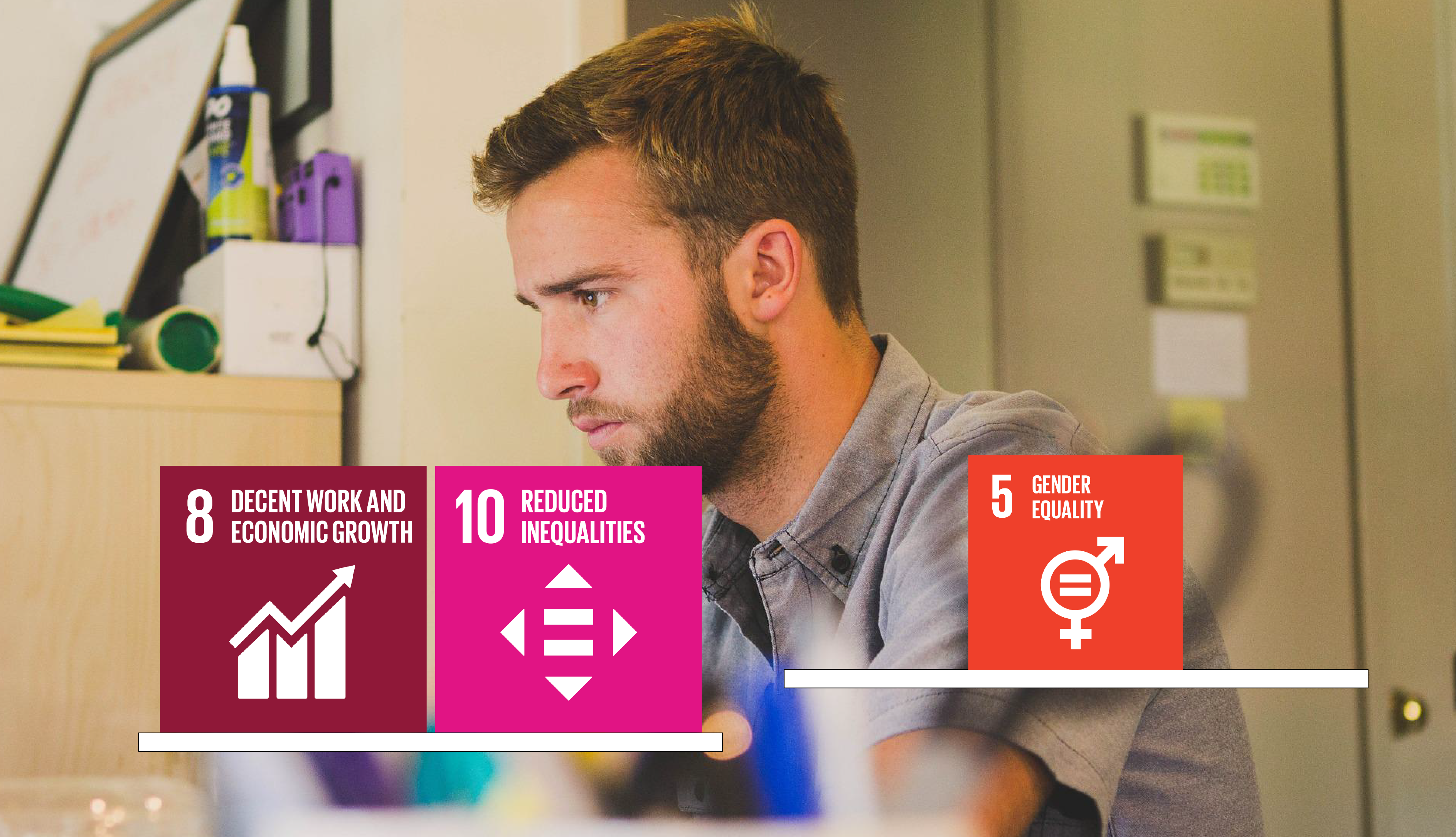COURSE DESCRIPTION
If you are young, your age can have an unfair influence on your employability and work conditions. The analysis of adultism, a concept regarding age inequalities among youngsters will raise students’ awareness of combating discrimination and promoting equality.
Primary SDG 8 and SDG 10, secondary SDG 5
SDG 8– Decent work and economic growth.
SDG 10 Reduced inequalities.
SDG 5– Gender equality.
Problem Based Learning Methodology
- Problematizes to raise the analysis
- Gets informed/ plays/ investigates/ proposes (call to action) formal ways to shed light on the problem.
PROBLEM STATEMENT
Central concepts are the sticky floor, glass ceiling and glass elevator. We look at the implications of these concepts on our close environment (vertical segregation off the job market).
Working questions:
- What does it mean to be a young person in the labour market?
- Which are the main inequalities and what can the students and the school do to take part in the change?
- Young women, victims of double discrimination?
SHARED CLASSROOM
The activities can be divided in different shared session. Prior to that day a short explanation to the SDG involved in the training module should be given.
Sessions
- Presentation and ice breaker (30 minutes). Big group.
- We get informed/we play: short exposition of the main facts of youth discrimination in the job market, through a game (Kahoot). (30 minutes). Big group
- We propose and we investigate. The students work in the preparation of their final product in small mixed groups while they investigate the main topic (consequences of adultism in the job market) (1,5 hours). Different sources of information will be provided by the teacher.
- Final product presentation and survey (30 minutes). Big group.
The class should be divided in small mixed working groups from both countries (about 4 students max if digital meeting) and all students will be together (big group) for general activities (ice breakers, overall reflections, reports and products presentations).
Lessons:
Shared Classroom 1
Individual Classroom 1
Technology needed:
- Internet connection
- A device to connect, a pc, cellphones or tablet
- Each participant has his/her own device and headphones if possible
LEARNING OUTCOMES
During the project, the students can develop different kind of products. These products should be realistic and suitable to the module length.
- Tik-tok videos
- Powerpoint presentations
- Summary document with recommendations for action
- Infographics
For the full Teaching module click on the green button above.
Course Features
- Lectures

